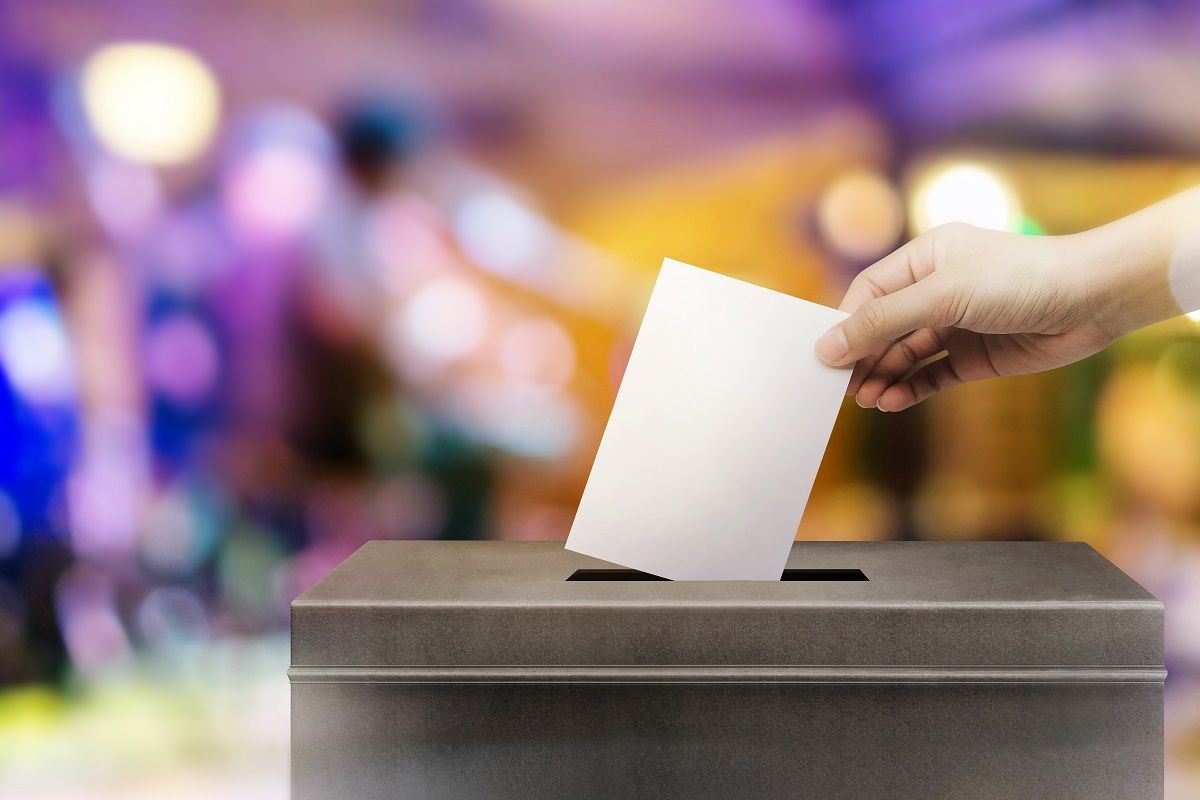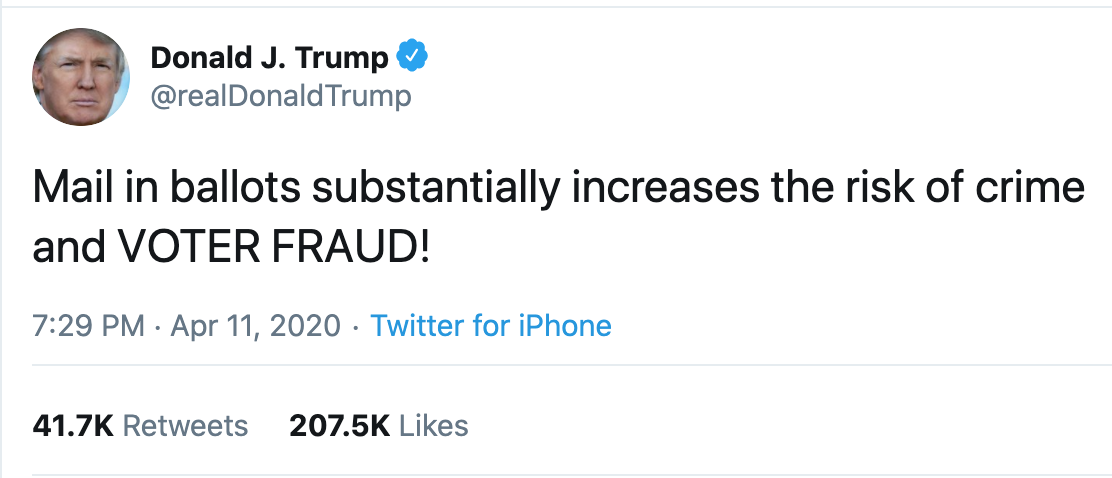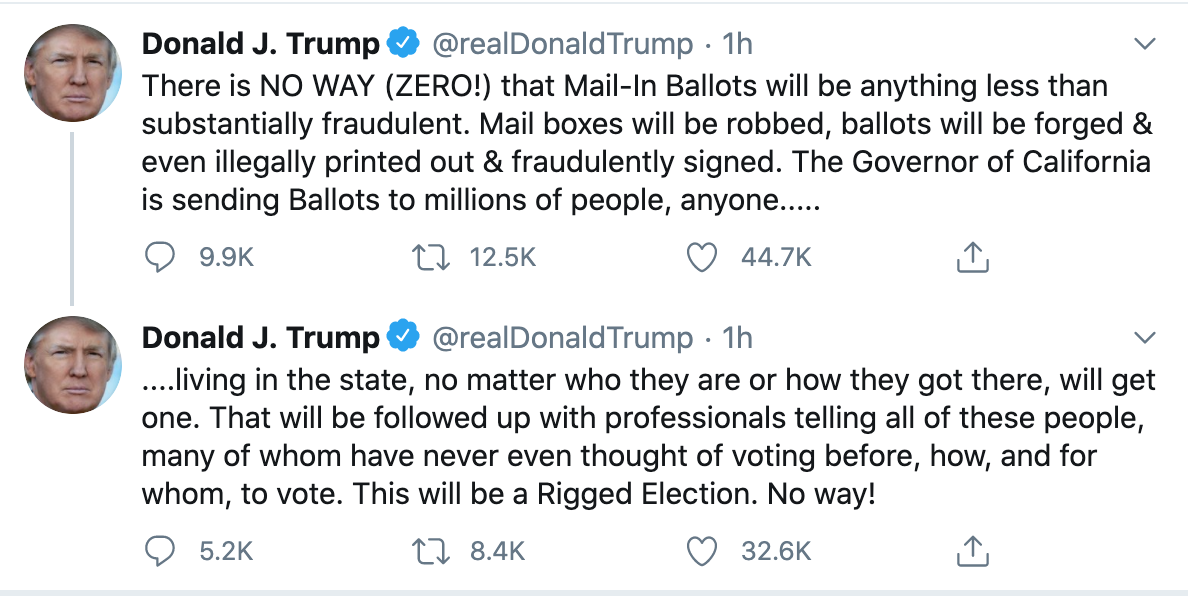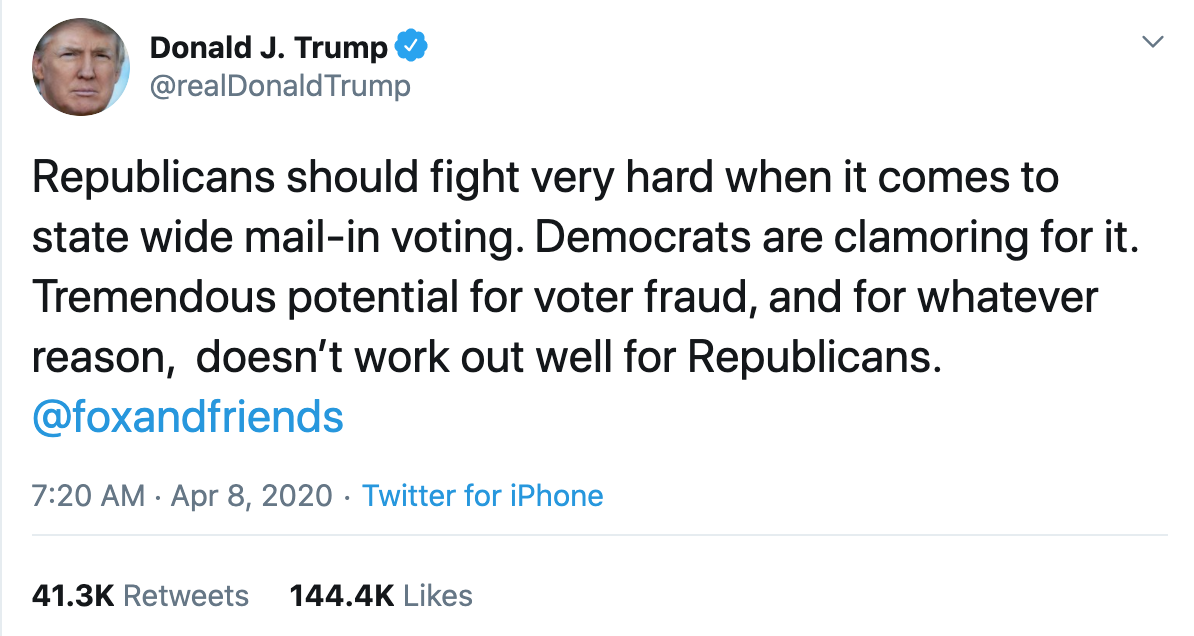While no U.S. government agency officially compiles state-by-state data on voter fraud, and requirements for mail-in voting vary by state, analysis by elections experts shows that fraud is slightly more common with mail-in voting than in-person voting at polling places.
All types of voter fraud in U.S. elections is minuscule in comparison to the number of ballots cast, according to elections experts. Taking that into consideration, it is problematic to make comparisons between types of ballot-casting systems and erroneous to claim mail-in voting "substantially" increases the risk of fraud.
As the number of Americans infected with coronavirus soared in May 2020 — roughly six months before the presidential election between incumbent Republican Donald Trump and Democratic rival Joe Biden — states scrambled to establish new rules on voting to meet public health officials' recommendations to limit in-person gatherings and fight the pandemic.
Democrats in Washington, D.C., pushed for more federal funding to help states make the changes — reforms that largely revolved around if, or to what extent, they would expand mail-in voting options for residents. Meanwhile, critics of that ballot-casting system headed by Trump alleged without citing evidence that it opened the door to fraud. In a April 11, 2020, tweet, the president said:
Remarks similar in nature from Trump made news headlines in the weeks that followed. On May 20, 2020, Trump falsely accused the state of Michigan of going down a "Voter Fraud path" by mailing absentee ballots, even though Michigan's secretary of state had sent out applications in accordance with the law, not ballots. Trump also attacked the state of Nevada for illegally sending voters mail-in ballots, despite the fact that a federal judge said it was acceptable for the 2020 presidential primary. The same day, Trump said the following to reporters, without providing any proof of the alleged crimes mentioned in Michigan and Nevada:
... mail-in ballots are very dangerous. There's tremendous fraud involved and tremendous illegality.
Then, on May 26, 2020, the president double-downed on his argument and called out the state of California, where Gov. Gavin Newsom announced earlier that month that his state would completely revamp its existing voting system in the upcoming general election due to COVID-19 and send every registered voter a mail-in ballot — the first and only state to make that significant of a switch in 2020 as of this writing. The president said on Twitter:
For the purpose of this examination, we are focusing on the underlying claim that seems to be motivating the series of attacks against mail-in voting: that the system increases the risk of voter fraud compared to in-person polling.
Also, let's first make clear what the president is referring to. Journalists, elected officials, and the public often conflate election fraud, or when officials or hackers alter vote tallies by manipulating voting equipment, with voter fraud. Voter fraud occurs when people cast invalid ballots (perhaps because they're not eligible to vote), forge ballot signatures, vote under false names (including the identities of the deceased or former state residents who have moved), or vote more than once in an election. Based on the nature of Trump's comments, he claimed mail-in voting "substantially" increases the risk of the the latter crimes — or creates more ways for people to commit them — compared to in-person polling.
Also, a critical fact to keep in mind while unpacking the president's assertion: Every U.S. state allows certain voters to cast ballots by mail, otherwise known as absentee voting, if those people request the alternative to in-person polling before Election Day. But rules governing those absentee vote-by-mail systems vary. These variances can make comparisons between ballot-casting methods problematic, or at best, misleading. And, simultaneously, a major record-keeping flaw underscores the debate: No U.S. government agency keeps an official database of voter fraud cases in the country.
Who Can Already Vote by Mail in U.S. Elections?
Before the COVID-19 pandemic put new pressure on states to reform elections systems, just five states allowed all registered voters to vote entirely by mail: Colorado, Hawaii, Oregon, Washington, and Utah. Several still operated polling stations for voters who prefer that method. Additionally, laws in 16 other states permitted local jurisdictions to run elections completely by mail under certain circumstances, such as when a town has fewer than 500 residents.
Then there are rules around absentee voting, which is when voters in elections that aren't mostly run by mail request mail-in ballots. The guidelines vary by state, including what elections experts and politicians refer to as "no excuse absentee voting" systems, where any registered voter can request an absentee ballot and avoid polling stations on Election Day, regardless of their reason for why they'd rather vote by mail. At the time of Trump's claim, laws in 30 states allowed anyone to request an absentee ballot and vote by mail, while others only allowed people to vote absentee if they provided a qualifying reason for why they can't make it to a designated polling station on Election Day, such as illness, physical disabilities, travel or work.
Despite Trump's criticism of the mail-in voting practice, he has taken advantage of it: Trump voted by mail during New York City's mayoral election in 2017, cast an absentee ballot the following year, and again used a vote-by-mail ballot in Florida's primary election in 2020.
But at the heart of the president's criticism in spring 2020 was this question: Would the 45 states that allow some version of absentee voting expand their existing vote-by-mail systems so that more people could use the method in the upcoming presidential election and avoid exposure to, or the spreading of, COVID-19 by gathering at polling stations?
In the months since the first reported U.S. case of COVID-19 in January, numerous states postponed their presidential primary elections to allow officials more time to come up with guidelines considering rules on social distancing, and several states expanded their standards on mail-in or absentee voting to give more people the option to cast ballots from home in the primaries. For example, Delaware Gov. John Carney ruled that all eligible voters would receive absentee ballot applications and could use the system's existing qualification "sick or physically disabled" to take advantage of the method and avoid in-person polling, and the Indiana Election Commission said all registered voters in its state could request absentee ballots, regardless of their circumstances.
How Is the Method in Which People Vote Related to Fraud?
No elections expert doubts that voter fraud is a problem in U.S. elections, and all agree state and federal leaders should take steps to prevent the crimes from occurring and prosecute any offenders. At the time of this report, for example, New Jersey elections officials were investigating claims that hundreds of ballots in a tight municipal election were improperly bundled in mailboxes and at a drop box in the Paterson area.
Yet the overall consensus among political scientists who analyze voter data and regularly speak with elections officials at the ground level is this: election fraud — much less voter fraud — in U.S. politics is rare.
A team of investigative journalists in 2012, for example, funded by the Carnegie Corporation of New York and the Knight Foundation, found an "infinitesimal" number of fraud cases in elections between 2000 and 2012 — a total of 2,068, which equates to about one case for every 15 million eligible voters.
Additionally, in late 2016, The New York Times asked all 50 states if they were investigating reports of voter fraud in the election of Trump, who repeatedly claimed at the time that people had cheated the electoral system and submitted ballots illegally. Of the more than 137.7 million people who had voted, elections officials recalled stories to the journalists of one South Carolina woman casting an absentee ballot and voting again on Election Day, two undocumented immigrants casting invalid ballots (one of whom realized the mistake and later asked elections officials not to count his ballot), and a few voters who illegally cast ballots in elections outside their home state, among other incidents. But in total, the newspaper concluded with its reporting: No state was grappling with widespread fraud.
But here is where an investigation into the above-mentioned claim by the president gets murky: While overall voter fraud is rare in America, less rare are crimes associated with absentee voter systems. In the 2012 research project, for instance, the journalists documented 491 cases of fraud involving absentee ballots — out of the billions of ballots that Americans had cast over 12 years — representing about one-fourth of all voter crimes the investigators found.
Richard Hasen, a professor at the University of California at Irvine School Law, said in a April 9, 2020, letter to the Washington Post, to which he referred Snopes in its fact-checking:
'Ballots cast outside the watchful eye of election officials (at polling places) can be stolen, altered, sold or destroyed,' pointing to the 2018 Congressional race in North Carolina as an example, where evidence that a Republican operative had planned to manipulate absentee ballots was so significant that elections officials decided to redo the entire election.
'While certain pockets of the country have seen their share of absentee-ballot scandals, problems are extremely rare in the five states that rely primarily on vote-by-mail, including the heavily Republican state of Utah.'
However, according to him and other experts, a comparison of fraud cases between ballot-casting methods must consider additional factors in elections: including states' preventative measures to combat the illegal activity, existing infrastructure for how people cast ballots and officials count them, and the fact that absentee voters can't correct accidental errors with their ballots — like a misplaced signature — like they can at polling places. Paul Gronke, a professor at Portland's Reed College and director of a non-partisan elections research center there, said in an email to Snopes:
It is simultaneously true that the levels of voter fraud in the United States is minuscule, and also that the examples we have of fraud are more commonly associated with absentee voter systems. But does that means that mail in voting systems are more vulnerable, or does it mean that the systems where fraud has occurred have not put in place the proper protections to protect against fraud?
In Oregon, which has extremely clean voter rolls, with accurate addresses, no deadwood on its rolls, a robust signature verification system, and ballot tracking, there is no evidence of voter fraud.
What is Behind the President's Motivation for Attacking Mail-in Voting?
However, no evidence supported the assertion that GOP candidates are at a notable disadvantage in mail-in voting systems. In fact, a study by Charles Stewart, a Massachusetts Institute of Technology professor and director of school's Election Data and Science Lab, that used 2016 voter data and survey responses showed an even split between the two parties: 26 percent of Democrats and 23 percent of Republicans voted by mail among respondents. Additionally, an online poll of 1,116 Americans (including 532 Democrats and 417 Republicans) by Reuters/Ipsos in early April 2020 found the majority of both parties' followers supported a requirement for mail-in ballots to protect voters' health during the pandemic.
The messages to polarize the political parties over voting methods was on the radar of elections scholars in 2020. For example, a committee of law and political science professors convened by Hasen, a group that offered recommendations for states to consider as they reformed their elections process to meet rules on social distancing, said the following:
Even before the worldwide COVID-19 pandemic arrived in the United States, close observers of American democracy worried about the public's faith and confidence in the results of the upcoming November 2020 U.S. elections.
It is harder for voters to get reliable political information. Incendiary rhetoric about rigged or stolen elections is on the rise, and unsubstantiated claims of rigged elections find a receptive audience especially among those who are on the losing end of the election.
Put another way, elections scholars believed Trump was attacking vote-by-mail systems in spring 2020 ultimately to try to undermine his supporters' trust in the democratic process should he lose against Biden in November. For instance, if Election Night tallies from in-person polling showed that the Republican candidate won, and then absentee voter totals released days later significantly changed that outcome, electing Biden as president, Trump could claim victory on Election Night and then allege that the mail-in ballots were tainted with fraud.
Gronke told Snopes:
I have no idea what is going on in the head of the President. He votes absentee, and absentee ballots have, over the decades, been more commonly used by portions of the population that lean Republican.I am not sure the President and some conservatives have any idea about how mail in balloting works, instead they are fanning flames of distrust and promoting conspiracy theories as a way to fire up their supporters.




